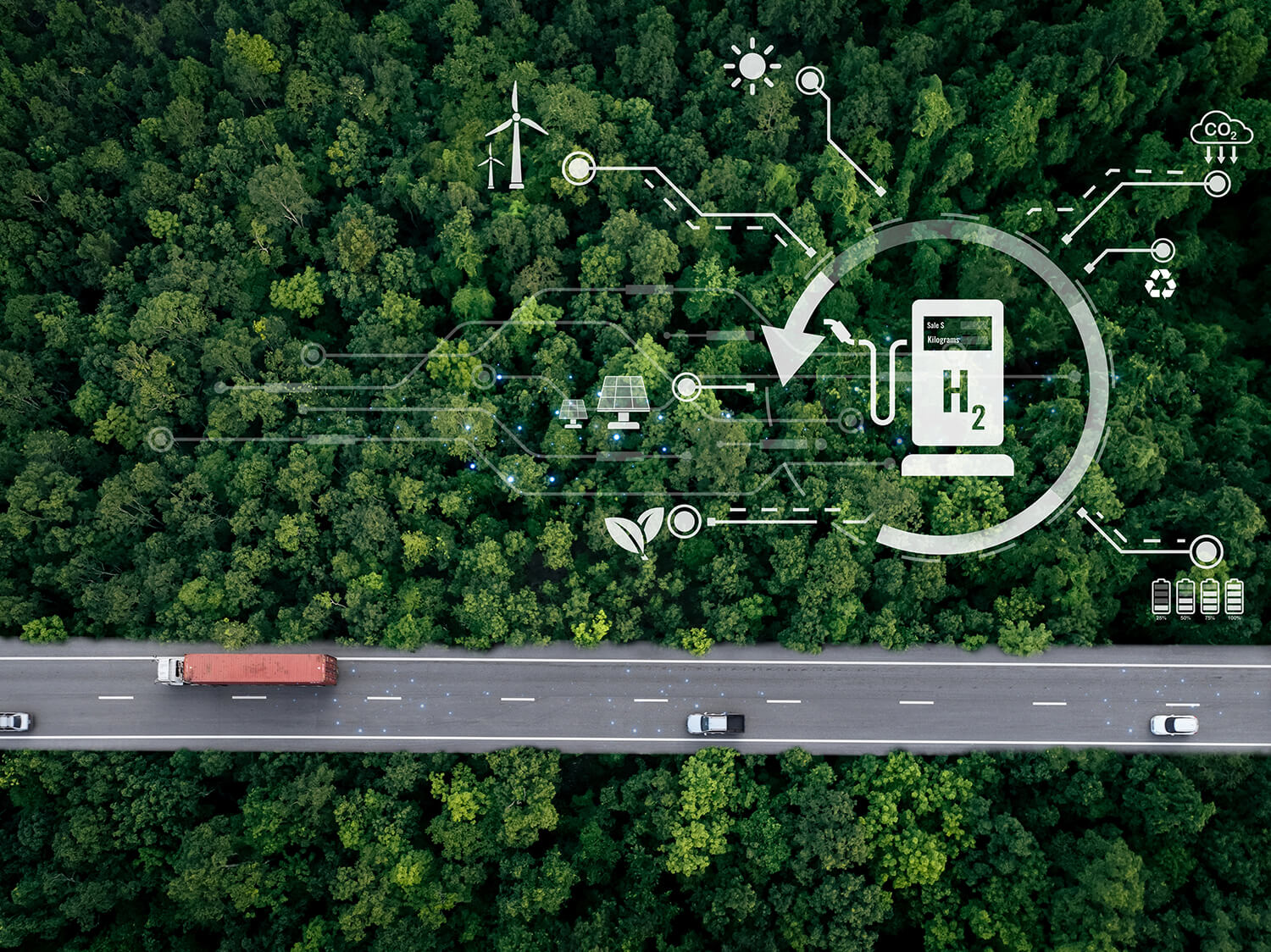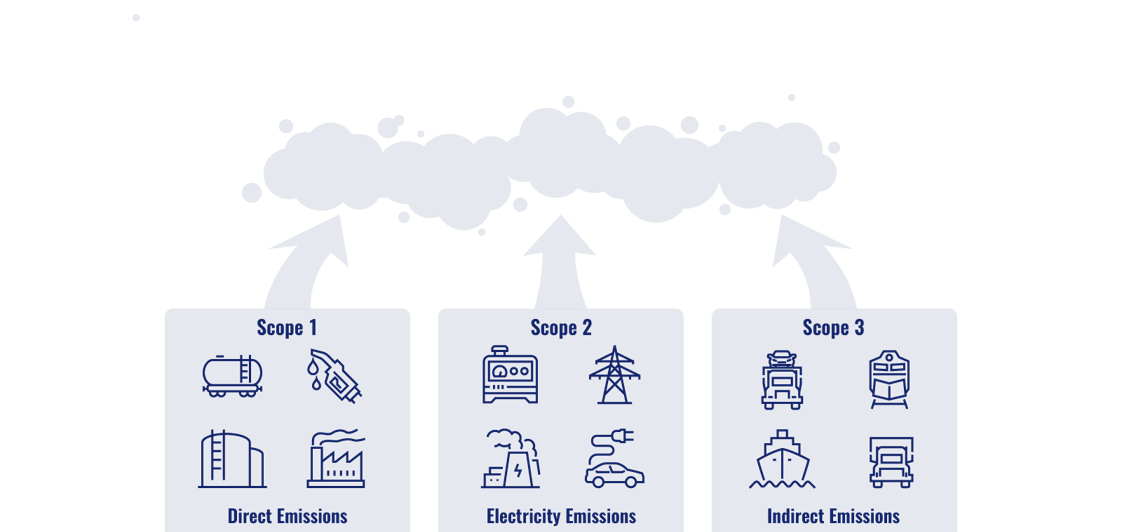Media Sharing
Get More from ICL Directly to Your Inbox



Premier visibility for railcar tracking & management
Trusted 3PL expertise for finished vehicle logistics
End-to-end visibility for finished vehicle shippers
Turnkey solution to manage your yard operations
Optimize or design your transportation network with ease
Streamline your load for maximum efficiency
Even more custom service solutions to support all your logistics needs
We're proud to be a leader in product visibility and invoice auditing solutions throughout the logistics supply chain. Learn more.
Looking to join our team of award winning experts? Check out our open positions now.
We want to hear from you! Get in touch with us today.
For the fine print on our privacy policy, cookies and data, & more.
See how we keep your data safe with certified security practices, secure systems, and constant monitoring.

In the last blog article of our series on Greenhouse Gas Emissions (GHG), we talked about CO2 emissions in finished vehicle logistics and why reduction should be a priority for every company. In this follow-up article, we will give you an overview of the steps to be taken to achieve carbon neutrality in the finished vehicle logistics industry. But first, we look at the goals of the EU and some automotive manufacturers and have a closer look at the terms around carbon and climate neutrality.
The EU tightens its climate targets with the latest legislative package, “Fit for 55”, seeing all EU countries commit to reducing their GHG emissions by at least 55% compared to 1990 levels by 2030. By 2050, it aims to become the first climate-neutral continent. A particular focus is once again on the automotive industry and road freight transport; for example, emissions from vehicles are to be reduced by 55% by 2030, and the same applies to trucks, where emissions are to be reduced by 50% in the same period. To find out more about delivering the European Green Deal here. But what does climate-neutral mean?
Terms such as climate neutrality, carbon neutrality and net-zero are often mixed up. Usually, all possible types of pollution are included here. The same applies to the term carbon neutrality. Climate neutrality is achieved when a product, a company or a country does not cause more pollution than nature can compensate. This is achieved if, for example, the production of a product does not cause more GHG emissions than the environment can absorb. If an entity offsets all GHG emissions by carbon bonds, it is called net-zero emissions. But not only the EU is striving for climate neutrality. Leading automobile manufacturers have also announced their GHG reduction targets and are aiming for climate neutrality.
The following graphic shows the goals of the EU and a selection of car manufacturers with the EU and most OEMs striving to become climate neutral by 2050 at the latest. Only Daimler considers climate neutrality to be achievable by 2039.

Significant emission reductions should be achieved by the end of this decade. However, these goals are often difficult to compare because they are based on different baseline values. For example, the EU would like to reduce its emissions by 55% compared to 1990, while VW would like to reduce its emissions by 30% compared to 2018. For climate neutrality, the finished vehicle logistics industry must reduce CO2 emissions in all areas. Usually, GHG emissions are divided into three categories; The following figure shows an overview of the three scopes.

Scope 1 emissions are referred to as direct emissions. These are greenhouse gas emissions that are caused directly by the reporting company. Scope 2 is when GHG emissions arise from the generation of electricity, and within Scope 3, emissions, also known as indirect emissions, comprise all emissions emitted by third parties. From the OEM’s point of view, all greenhouse gas emissions that occur in the context of the outbound and finished vehicles supply chain are therefore Scope 3 emissions. The basis for reducing all types of CO2 emissions is reliable and precise data, a uniform calculation, monitoring of greenhouse gas emissions and reporting that ensures comparability. Below, we give an overview of the necessary steps to achieve a Net Zero Outbound Supply Chain.
In the first step, the primary data, such as consumption, miles/kilometers and load, must be determined for each section of the outbound finished vehicle supply chain. A modern software-based tracking solution for end-to-end visibility is recommended, which aggregates and validates the data of the individual logistics service providers. To obtain a reliable overall result, it is crucial to consider the emissions from the vehicle transport and the transport emissions from empty miles/kilometres driven. The data should also include GHG emissions resulting from storage and services on the vehicle.
The data should then be checked for completeness and, if necessary, supplemented with emission factors. Based on this data, the actual transport greenhouse gas of the outbound supply chain can then be calculated, measured, and tracked. An internationally recognized calculation method, such as the GLEC framework, should be used. Find out more: What is the GLEC Framework? – How to implement items | Smart Freight Centre
The emissions then calculated should also be reported in a recognized standard to ensure comparability. Once a company has calculated reliable GHG data, measures to tackle and reduce emissions can be obtained. With the help of the previously calculated data, it can be seen in which areas of the supply chain rapid or substantial reductions can be achieved. For example, it can be evaluated which savings can be achieved through network optimization or the avoidance of transport and in which areas investments must be made in new emissions tracking technology to achieve a GHG reduction.
After the implementation of the reduction measures, the actual savings should be verified using new emission data. Recognized standards can offset the remaining emissions. This process must be repeated continuously until carbon neutrality is achieved. The following graphic shows the method described above.

For companies, the road to Net Zero is still a long way off. But the goals have been set, and current results show that they should be achieved sooner rather than later. But to accomplish these GHG emissions savings requires collaboration across the whole automotive industry. Reliable data in a uniform format is needed. This is the only way to identify the best possible savings that do not endanger the profitability of the companies.
If you want to know more about how ICL can support you with your GHG emissions, get in touch with us.


